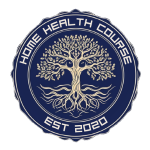Home Health Documentation – Faster and Smarter
Working in home health has many benefits including: flexible scheduling, higher than average pay, and considerable autonomy to name a few. What home health doesn’t offer is easy documentation. In fact, most therapists consider documentation the single most difficult part of working in home health.
While treatment notes can take as little as 5-10 mins, evaluations and starts of care can take up to a few hours. The overwhelming burden of documentation outside normal business hours adds up quickly.
Each patient encounter requires thoughtful and skillful documentation. Ultimately, documentation is the only thing demonstrating the skill provided during treatment. If the documentation does not indicate the skill provided, then upon review, payers may request return of payments.
Systematic documentation is key
Meeting all necessary requirements for therapy documentation isn’t all that difficult. By devising a way to quickly and accurately record what was done, why it was done, the response to what was done, and what the plan is going forward, you can save a lot of time. This is where documentation templates come into play. Using templates that can work for a variety of patients by changing key words and phrases, can greatly simplify the whole documentation process and save hours of time.
Are documentation templates okay to use in home health?
As long as you are documenting what is required for each patient, whether or not you use documentation templates does not matter. The documentation you submit, must accurately describe what occurred and the skill provided during a visit. Even without using documentation templates, each provider will have specific language and phrases that are used over and over throughout their notes. Templates simply serve as a way to speed up the process.
Not only are templates okay to use, they can also serve as a reminder to obtain and record additional information you may have forgotten initially. Recording the patient’s response to treatment is often forgotten, but with templates, you can be sure to include details which can protect you in case of chart reviews or litigation.
How much time can I save by using home health templates?
When properly implemented, many providers are able to recover nearly half their documentation time. This is time they can then use to see more patients and make more money or spend time with family and friends.
Should I use only documentation templates?
While it may be tempting to use only templates for your notes, each patient encounter will have unique elements that should be included and won’t likely be part of any existing templates. Often times the patient’s subjective information and patient education are pieces that require additional written information.
Where can I find home health documentation templates?
I’ve compiled over 190 different documentation templates that can be adapted to meet each one of your patient needs. Documentation phrases and templates to simplify and justify skilled services covering: evaluation, outcome measures, assessments, treatments, interventions, orders, and call scripts.
The future of documentation?
Ideally, regulations need to be reformed to reduce the burden of documentation on healthcare providers. Unfortunately, this is very unlikely to happen as even in the years where the Centers for Medicare and Medicaid Services (CMS) has claimed to reduce documentation burden, the result was actually a net positive in items being recorded. This was seen in an OASIS – D revision that removed some items, but added many more (GG items).
At some point, machine learning should help to reduce part of the burden by pulling information from available patient history and automatically importing it into your EMR.
To address the need for continued improvement in documentation efficiency, I am preparing to launch /DocKeys which combines dynamic templates and smart interpretation of assessments to drastically reduce documentation time. Head over to dockeys.io for the latest.


Recent Comments